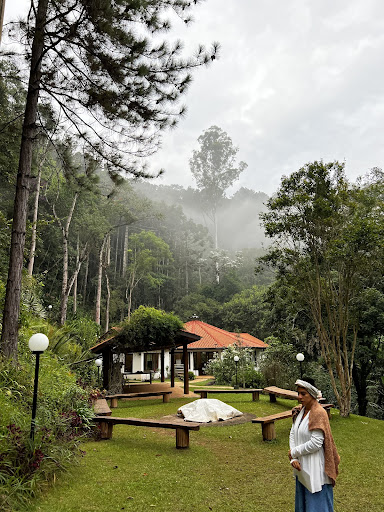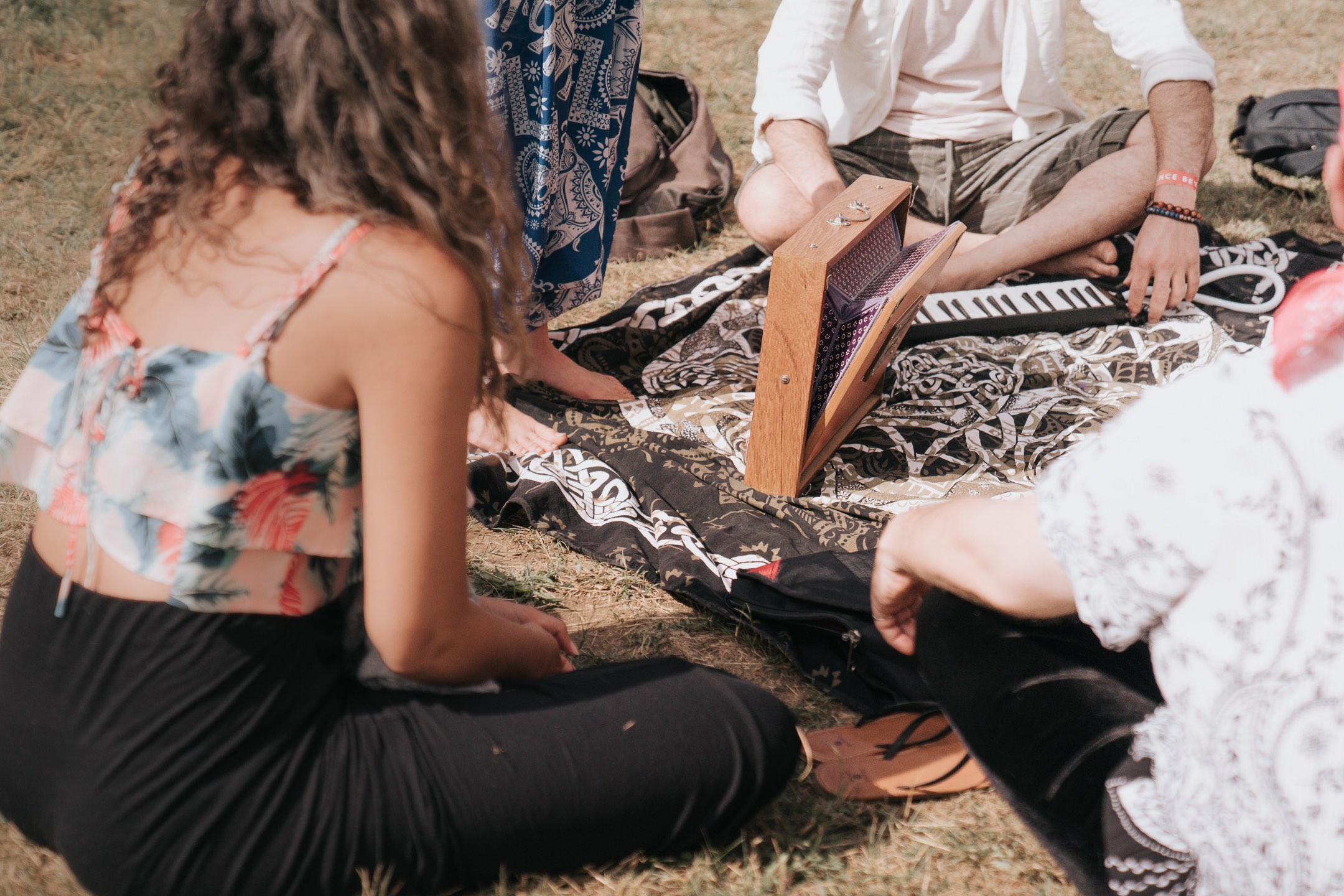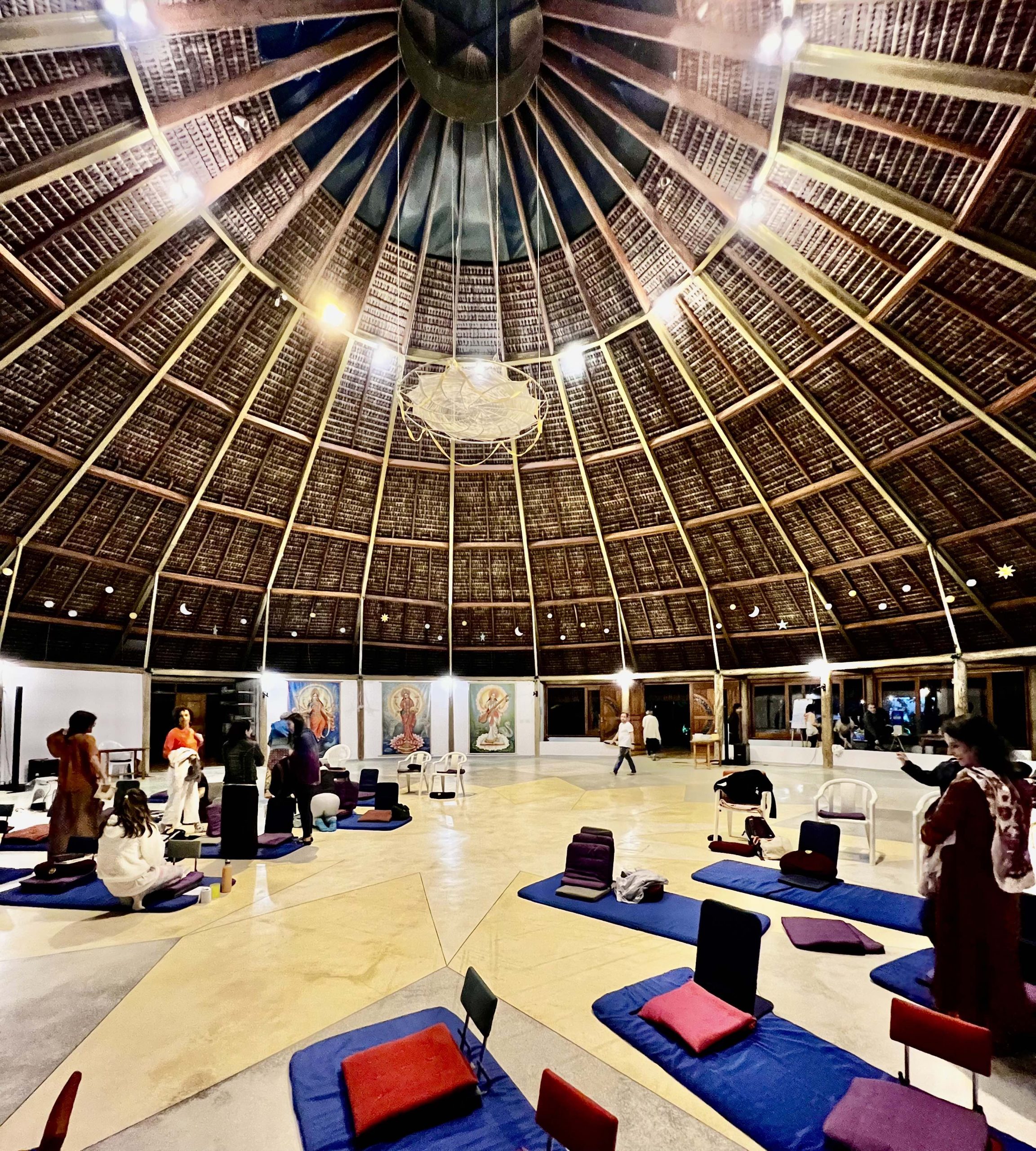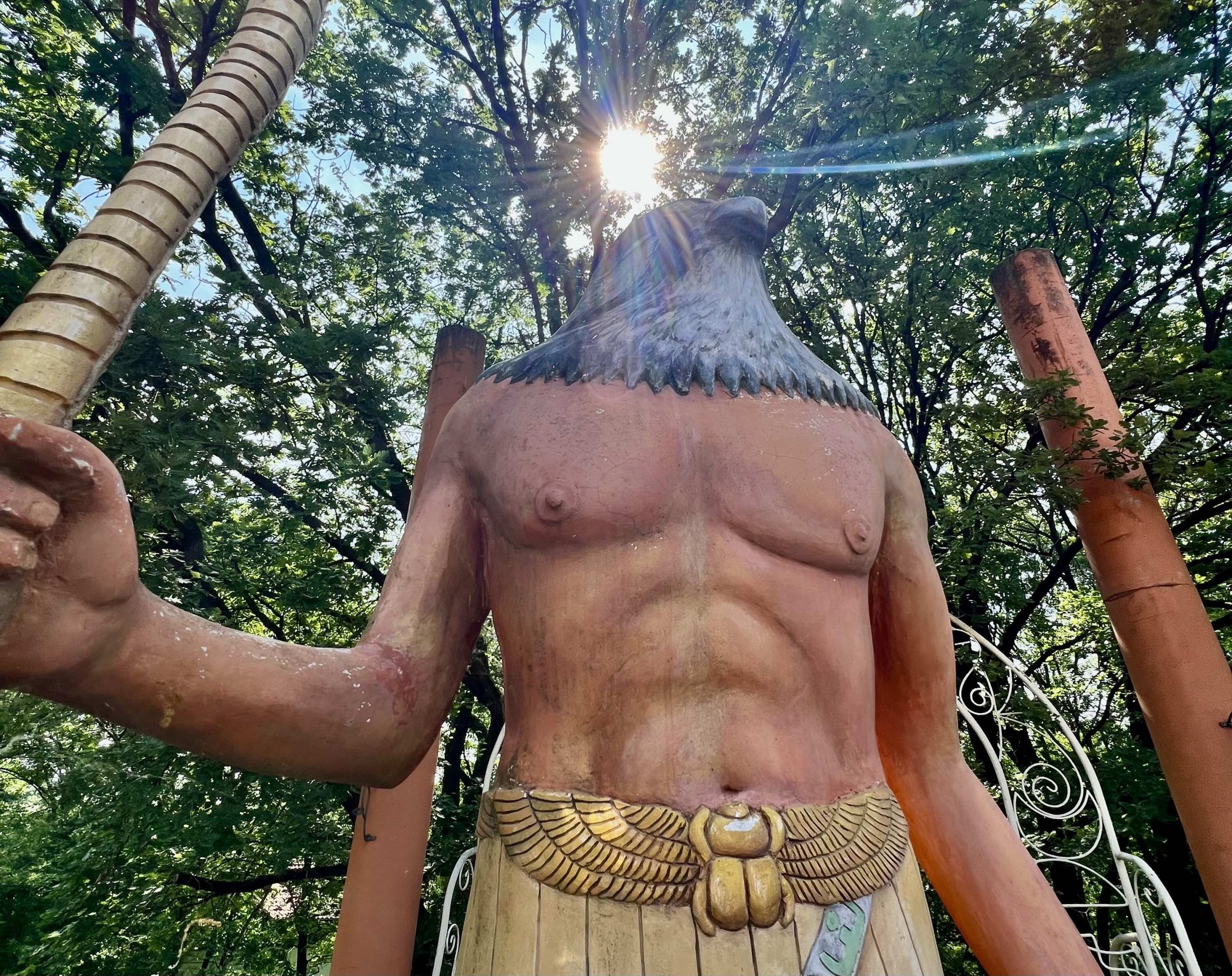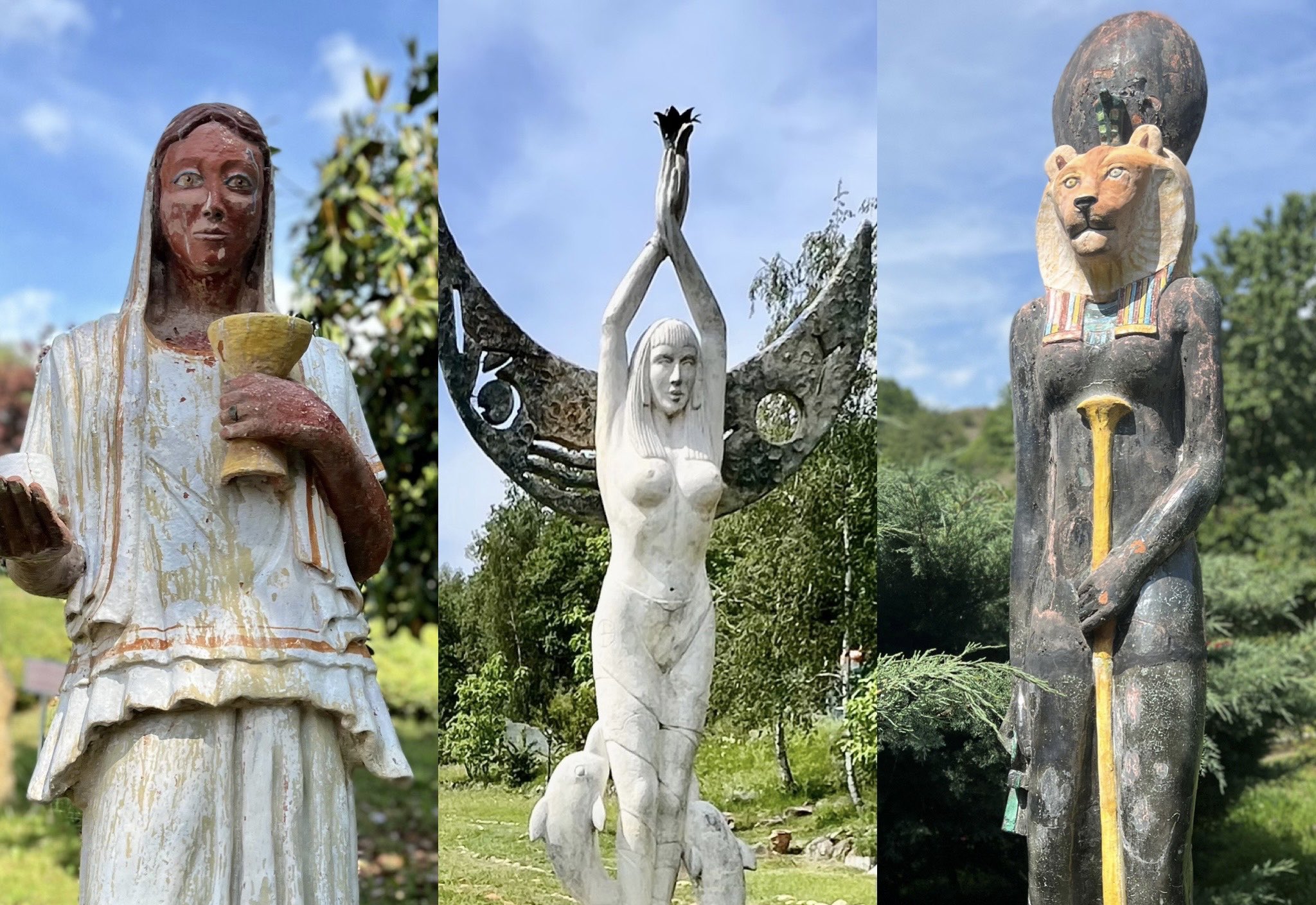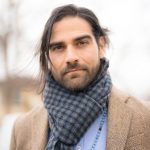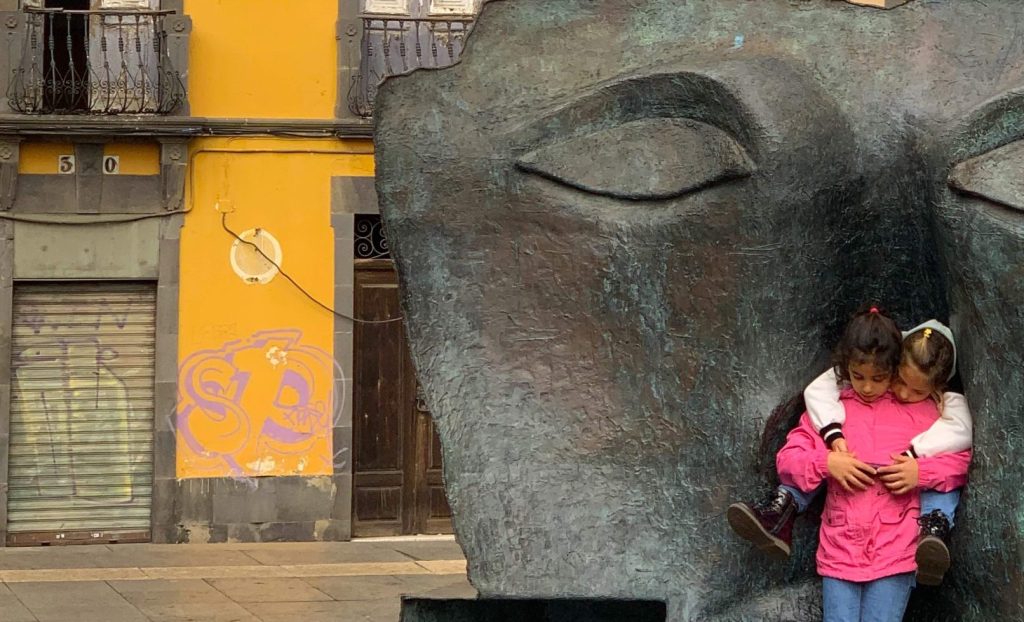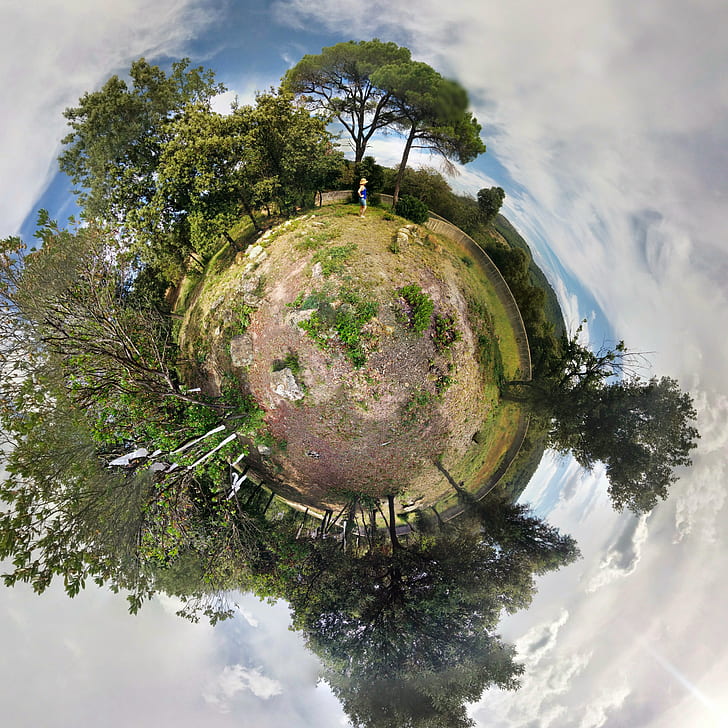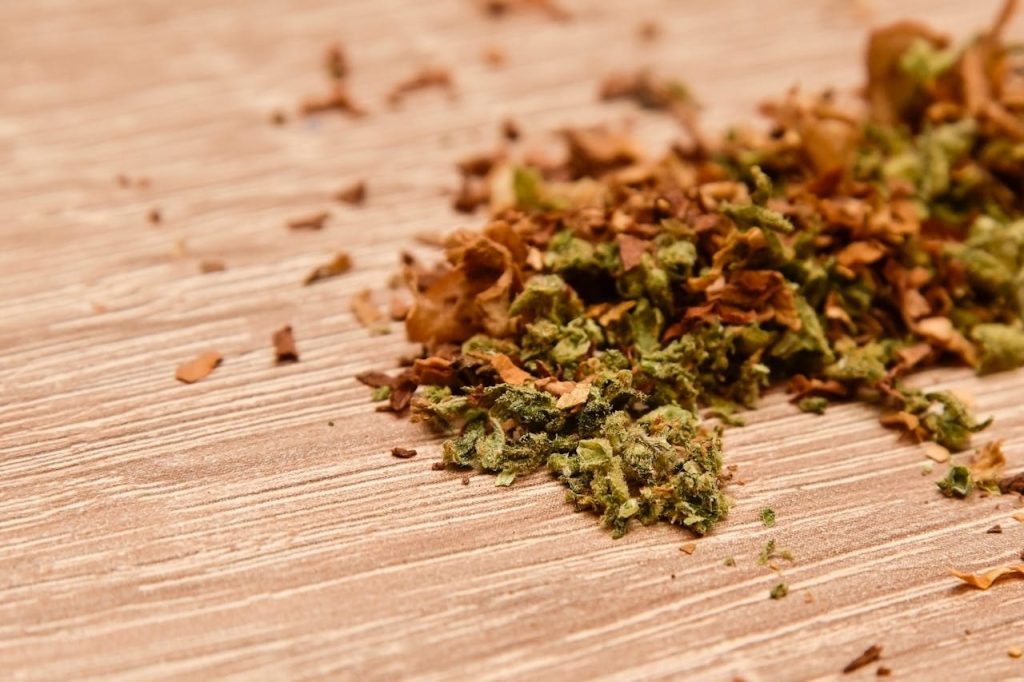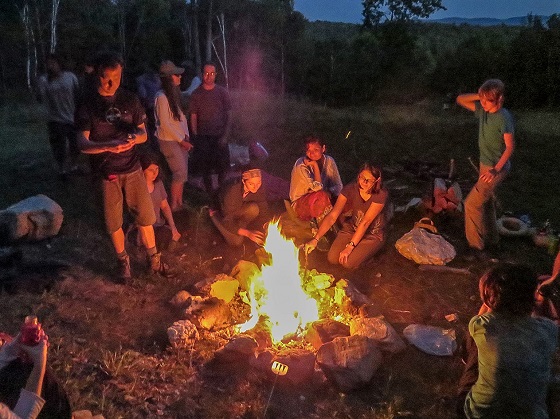What I Learned Visiting Intentional Communities
Feeling the frost melting after the pandemic winter in Boston, I took to the road in search of intentional communities across the Americas and Europe. I explored the eco-villages of Appalachia, ashrams of Sao Paulo, and Esoteric societies of Turin. What I found is a keyhole view into the next evolution of human consciousness and a nurturing path towards climate action. The similarities among communities, regardless of location or belief, teach us what truly nourishes the human spirit and how that is fundamental to humankind’s survival on planet earth.
Above all, communities show us that climate action is an invitation to evolve our lifestyles. The communities I visited have shattered my basic assumptions about the pathway to a sustainable future. What if restoring balance with the planet was a byproduct of living with abundant beauty, deeper connections, purposeful work, and acting-out our wild imaginations?
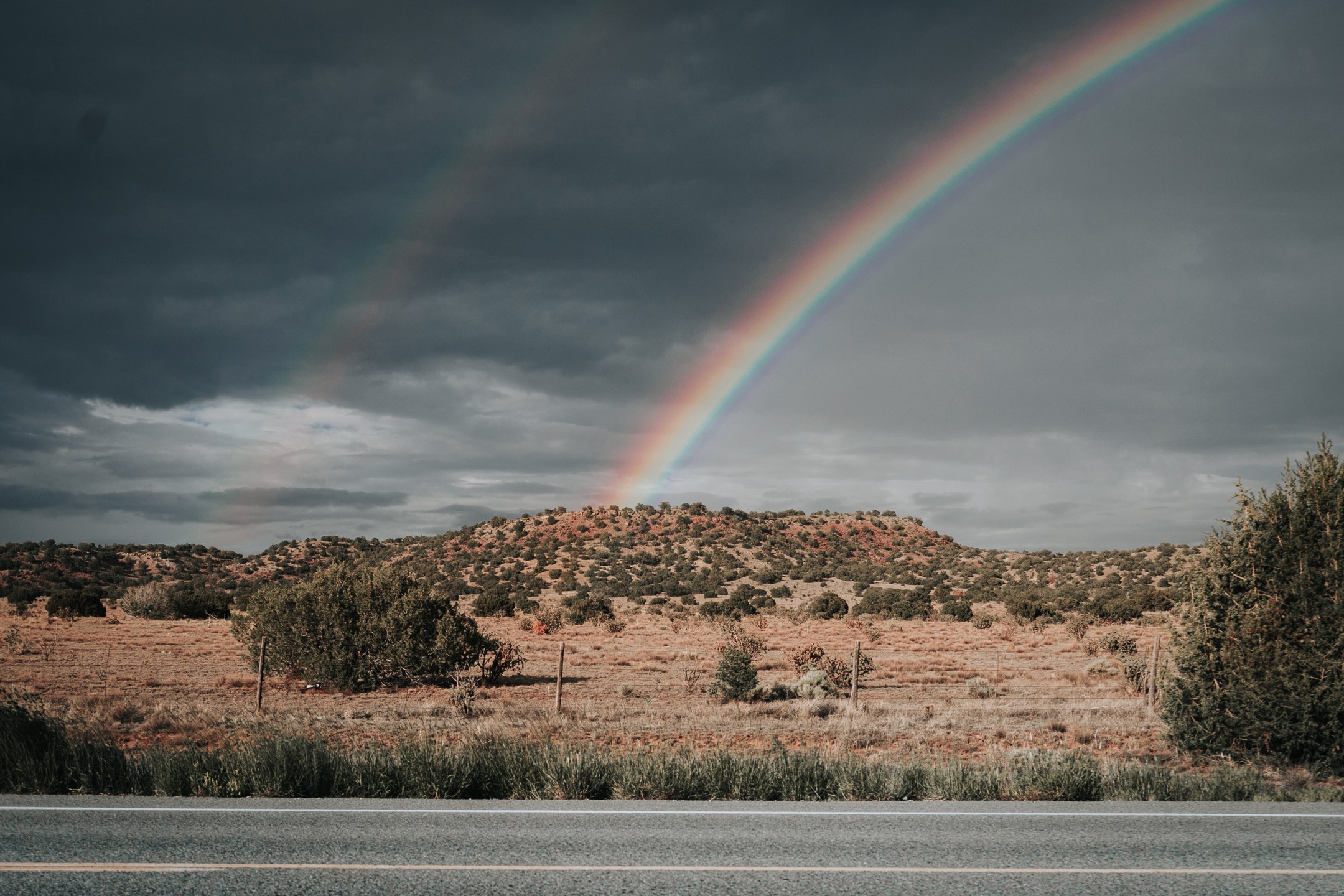
Transforming Systems at Earthaven
It was a muggy August afternoon when I arrived in Earthaven Ecovillage, nestled in the foothills of Black Mountain, North Carolina. The musky smells of peat and sassafras and pine intensified as I exited the car. Children popped in and out of sight from the wood’s edge. Earth-buildings, scattered throughout the village, were dappled with mosaic and raw-wood banisters. Blackberries tempted us at every corner. Right angles were scarce. Circular spaces and circular systems were abundant. But I quickly lost any illusions about a quaint and woodsy retreat milking-cows and foraging for wild edibles. Earthaven is not a Disney-land for off grid living. It’s a laboratory for global systems transformation.
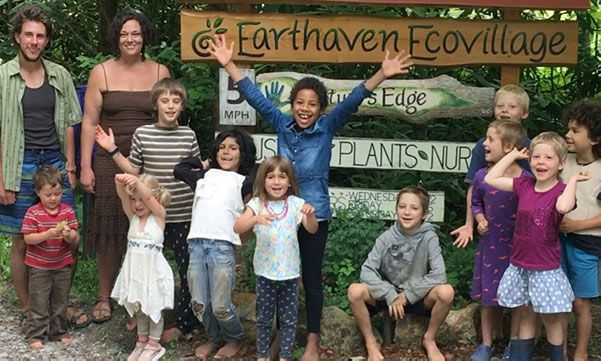
NikiAnne Feinberg welcomed our group to the Ecovillage Experience week hosted by SOIL, the School of Integrated Living. Thirty of us, diverse in age, gender, and ethnicity, sheltered from the summer sun under a large tent, outside of the earthen community hall. We eased into the week with a group meditation and intention setting. Then we jumped into a discussion about the inflation issues with the Ecovillage’s home-grown currency. “Inflation issues?” I was baffled. For five days, NikiAnne opened our eyes to the good, bad, and the ugly of community building, of Earthaven’s experiment with reimagining the basic systems of governance, economy, and culture over the last three decades.
To be fair, by day three, we did forage for wild edibles. A decorated botanist and chef guided us from plant identification to gourmet hors d’oeuvres before dinner. Stinging nettles, chanterelle mushrooms, and wild garlic all starred in our rugged, culinary experiment. And as the week progressed, we slowly met the community’s 80+ permanent residents. Entrepreneurs and educators. Wilderness guides and wild haired accountants. And for people with such an audacious mission, to model another way of human settlement, they are incredibly grounded. There is a reverence for free time, connection with nature, respectful communication, and the wisdom of elders. Over my six week stay, these virtues revealed themselves as the real priorities of Earthaven. The new reality of humankind would emerge from this fertile soil, not grand plans for social transformation.
I have worked on sustainability transformation in some of the most complex urban environments across the globe. I have planned ecosystem restoration projects in the Bay of Mumbai. I’ve worked to overhaul the energy grid in the heart of Boston. But, until my visit to Earthaven, I overlooked the simplest, most essential ingredient for a sustainable future: human happiness. The ecovillage was full of quietly content, humble, yet world-changing innovators who were meeting their deep human needs at a fraction of the cost and ecological footprint compared to average Americans. But to get there, Earthaveners have cultivated a culture exploring the fundamentals of human happiness.
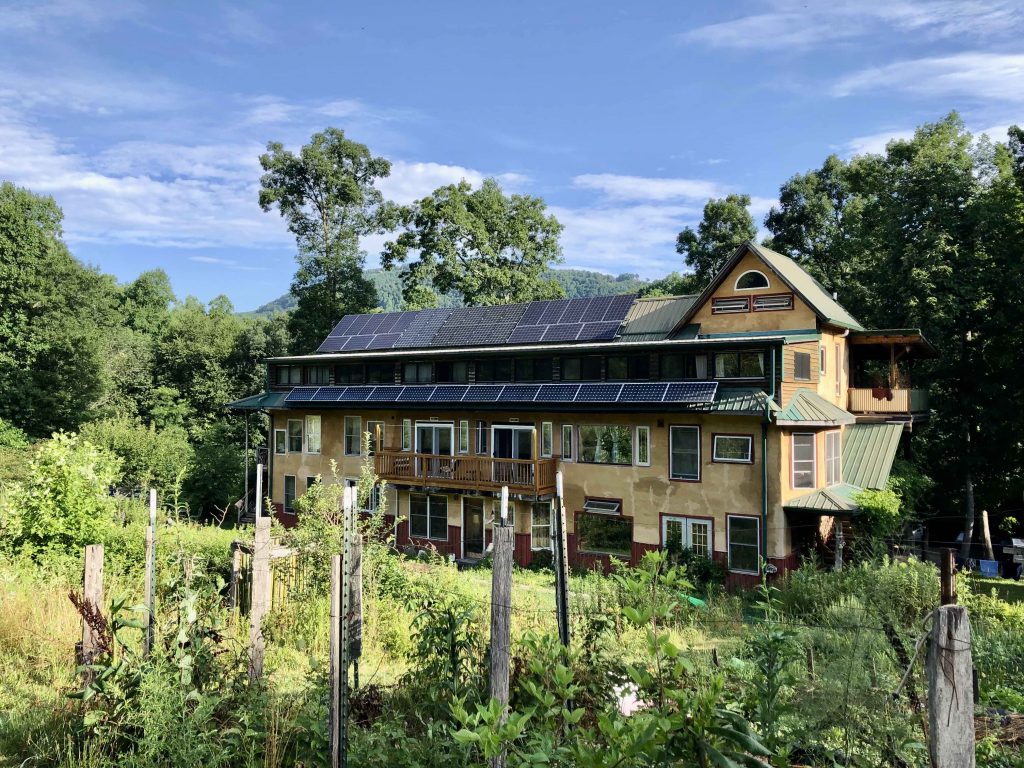
Early in visiting communities, I learned about Non-violent Communication, or NVC. This is training to re-learn how we express our feelings and emotions in daily life. But it is so much more. NVC is, in fact, a platform to explore the fundamental question, “What makes us happy in this world?” Marshall Rosenberg, the founder of NVC, says there is a deep human need that underlies every single action of humankind: we want to belong. He goes so far as to say it is our purpose in life to belong. And what is belonging? Rosenberg defines belonging as a two-pronged, reciprocal act. Belonging is both the act of giving our gifts and talents to the world, but also having those received lovingly by others. Communities, thus, create a stage for this dance of giving and receiving. Once I learned this, I couldn’t unsee Marshall’s core principle of belonging.
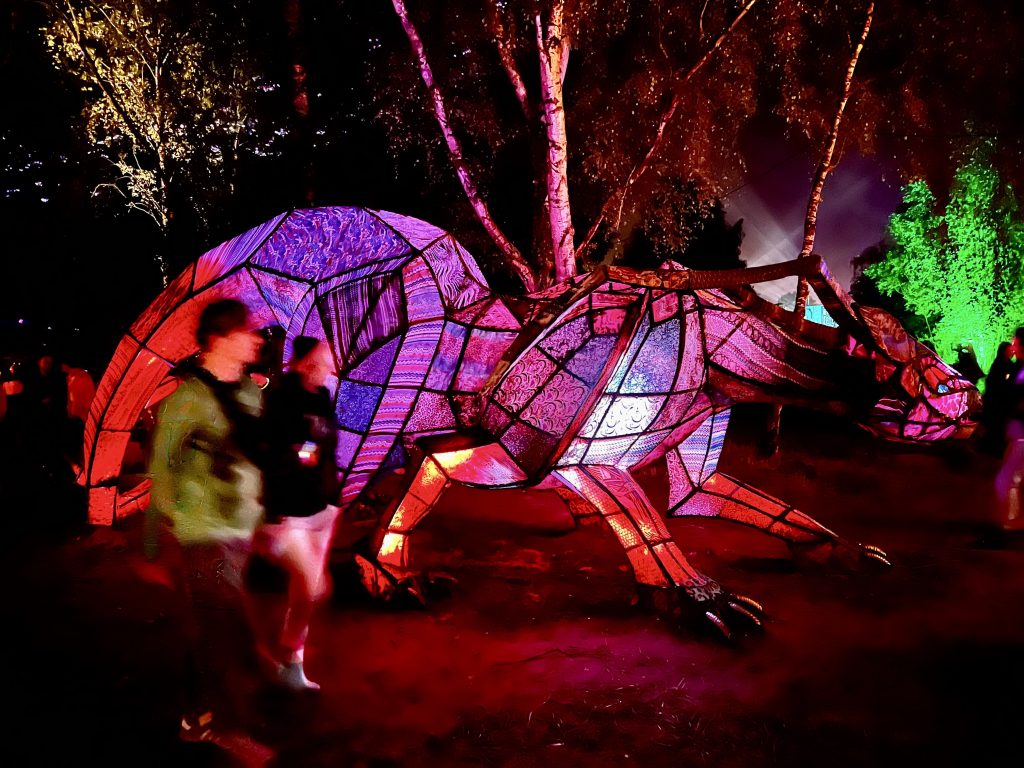
Belonging in Real Time
I arrived in Larz, Germany to a defunct Russian airbase late on a rainy Friday night to attend the 2022 Fusion Festival, the Burning Man of Europe. Over 300 acres of musical stages and theatrical performances, enchanted forests with disco balls, and neon-clad pop-up bars. Pirate themed stages and Blade Runner districts. Fire spinners and light whippers. Gypsies and anarchists and crypto-millionaires all co-creating an atmosphere of intense peacefulness and fantasy supported by 24-7, ‘anything goes’ atmospherics.
But I wasn’t there for the big-name DJs or the buzz of a seventy-thousand person event. I was there to learn about the community. And after three restless days of dancing, circus acts, and world-class art exhibitions, I found what I was looking for. Of the seventy thousand attendees, ten thousand were supporting the operations – whether that meant cleaning bathrooms, staffing cafes, or working as production crew. And did they show-up for the free ticket? No, these ten thousand support staff had been strategizing, constructing, and co-creating the festival over the last two years.
Weekends and holidays, vacations and staycations, the volunteers feel a belonging to “the Fusion”, they are painting the new world they envision with their very own hands. The festival has over 20 stages, over 200 cafes and bars, and over 600 live shows – each supported by a cooperative of volunteers or entrepreneurs. This is the chaotic, emergent, co-creation of an alternative universe. And the Fusion becomes more real with every cooperative business, every volunteer weekend, that materializes its values.
According to Marshall, the more tangible a contribution, the easier it is to remember, to integrate, to feel for the individual and for the group. Things like building community gardens, hosting plays or concerts, or cooking communal meals – these creates a physio-emotional response inside of us that says, “I have given and that gift has been received. Mission Happy, accomplished!”
With money as a medium, the dominant Western experience is deprived of this dance of tangible belonging. Our gifts and talents are so commonly rewarded exclusively with money, that it’s hard to see if they are received or not. The real-time feedback loop of belonging is short-circuited as the giver and receiver become more distant. And this is why I believe that intentional communities emerge: people want to feel the loop of belonging in real time. It’s the itch we can’t scratch isolated in a cubicle, or behind a cash-register. Community, whether a permanent Ecovillage, or an ephemeral Festival, is the stage where we experiment with belonging – meeting our deepest need as a collective humankind.
Song and Circle: Community and Inner Healing
In my travels, the common motivation for community action is clear: to prove that a mindset shift can reshape the world. Allies across the globe are saying this message in their own unique voice. Permaculture practitioners are relearning the wisdom of the land. Ecovillages are rediscovering the richness of interdependence. Healers are soothing ancient traumas.
The old stories of righteous individualism and domination over nature are being rewritten. Reciprocal gift and existential interdependence are gaining a hold as fundamental values that can drive our economies and settlements. Inner healing, nature reconnection, and community life revival are the three pillars I have observed common to any community ecosystem. These Three Medicines are the salves found in community for healing the systemic challenges of humanity. They are the fertilizers for new systems to emerge.
Inner Healing captures the teachings and tools for deepening our spiritual practices and overcoming the archetypal traumas germane to human existence. Pioneers of this Medicine include psycho-spiritual therapists, faith-leaders, and wisdom tradition masters. Nature Reconnection captures the resurgence of small-scale farming, permaculture, plant medicine, and indigenous thinking. Pioneers of this Medicine include permaculturists, regenerative thinkers, indigenous teachers and wilderness enthusiasts. Finally, Community Life Revival captures the renaissance of gift-economy, co-living, ceremony circles and ecovillages. Pioneers of this Medicine include intentional communities, festival communities, and faith-groups.
Of the Three Medicines, I was most surprised by the role of community in Inner Healing. Texts like Don Miguel Ruiz’s The Four Agreements and collaboration modalities like Sociocracy are now commonplace in intentional communities. There is a growing understanding that the individual’s inner clarity enables the success of the village. Said another way, it is generally accepted that psychological blockages, or personal issues, are the root cause of collaboration meltdown.
Ancient cultures knew that inner healing is a matter of the spirit, that it will take more than talk-therapy to exorcize certain traumas. While each community I visited had a practical dispute resolution protocol, they also sit in circle and engage devoutly in ceremony.
From the crisp and star-studded night of the New Mexican desert, to the symphonic rainforests of São Paulo, to the Ashrams of Rishikesh, humankind gathers in circle to shed their fears and cast their prayers. The air fragrant with the tang of white sage or the musky steam of incense, these ceremonies open our senses to connect the spiritual and material realms. And a song emerges. A tradition as old as time, the healing vibrations of group vocalization begins to heal our personal wounds and collective trauma.
The medicine song circles of Appalachia, with roots in folk and Celtic tunes, feel like ancient gatherings. Songs of lost love, found spirits, and nature’s grace are shared in an oral tradition as old as time. There’s often an elder or leader, bearing a guitar or drum, who facilitates and curates the experience for newcomers, around a fire under the light of a starry night. Each song carries an energy of reconciliation, sorrow, or celebration. If a person proposes a song, they want to share its medicine.
Some songs are complex and newcomers may shy away from singing. But after one or two rounds of a repeated verse, something happens. Together, the group slips into a trance state. Overlapping melodies, words, voices create a choral ecstasy that sweeps the group to an elevated state in minutes. This is the real medicine of the song circle, we co-create a field of timeless presence where the joys and pains of humankind are not only felt, but moved collectively.
In the heart of the Amazon Rainforest, the ancient ways of Forest Spiritism have been alchemized with Christianity into the Santo Diame tradition. Though there is scant data on the matter, single branches of the Santo Daime Church report tens of thousands of members worldwide. For a single gathering, church members spend more than twelve hours together, taking the sacrament called Santo Daime, a derivative of Ayahuasca, chanting hymns, and healing collective wounds. The psycho-active ingredient of the sacrament is the chemical DMT. Also known as the Death Molecule, it is a compound believed to be released in the brain twice in a human’s life: once upon their birth, and directly before they die. Said another way, the group comes together to experience a collective death of the ego.
The members gather dressed in white clothing in a large circular hall, a soaring thatch roof with an oculus above is supported by a wooden timber and golden-steel structure. They enjoy 360 degree views of the rainforest and a symphony of birdsong. Seated in concentric circles, one semicircle is male and the other female. As the intensity of the sacrament arises, some experience bliss states, some a psychological rollercoaster. For the latter group, the Daime pokes and prods at personal insecurities, long suppressed wounds, and once-forgotten grudges.
But, does this lead to group therapy, venting of personal misfortune in circle? No, the Santo Daime tradition consists of meditation and singing, and singing, and singing some more. The wisdom of the tradition is captured in hymns celebrating Christian icons and Forest Spirits. The Hymns, or Hinus are sung in unison and considered a lubricant to release, often subconscious, psychological woes. Participants are meant to witness their deep-seated fears, but not dwell on them.
The tradition dates back to the early 1900’s, developed by the church’s founder, Mestre Irineu in the Amazonian State of Acre. Considered a mystery tradition, the philosophy of Santo Diame is not easily summarized. According to the teachings, the psychological woes surfaced by the sacrament are intelligent, autonomous spirits that gain power by feeding on our attention. So, to sing Hinus in the face of fear, to chant through the pain, is to starve negative energies of their power. Only once they are seen and starved, do old grudges truly die. Only then do we reclaim our full mental and emotional bandwidth to experience the richness of life.
With men seated on one side and women on the other, it is said that an energetic Current is formed by the polarity of the group. The Current is like spinning water in a washing machine, it eases the process of removing hard-to-clean stains, sufferings and pains. The burden of facing and processing fear is carried as a collective. Exorcism is a group activity and the lines between personal and group suffering blur into irrelevance.
And once the hymns are finished, the spin cycle complete, an aura of euphoria envelops the church. Hours remain for joyous celebration, meditative relaxation, and, if the mood is right, really rocking dance parties. Armed with mental and emotional clarity, participants can feel the effects of the work for weeks after a Daime session.
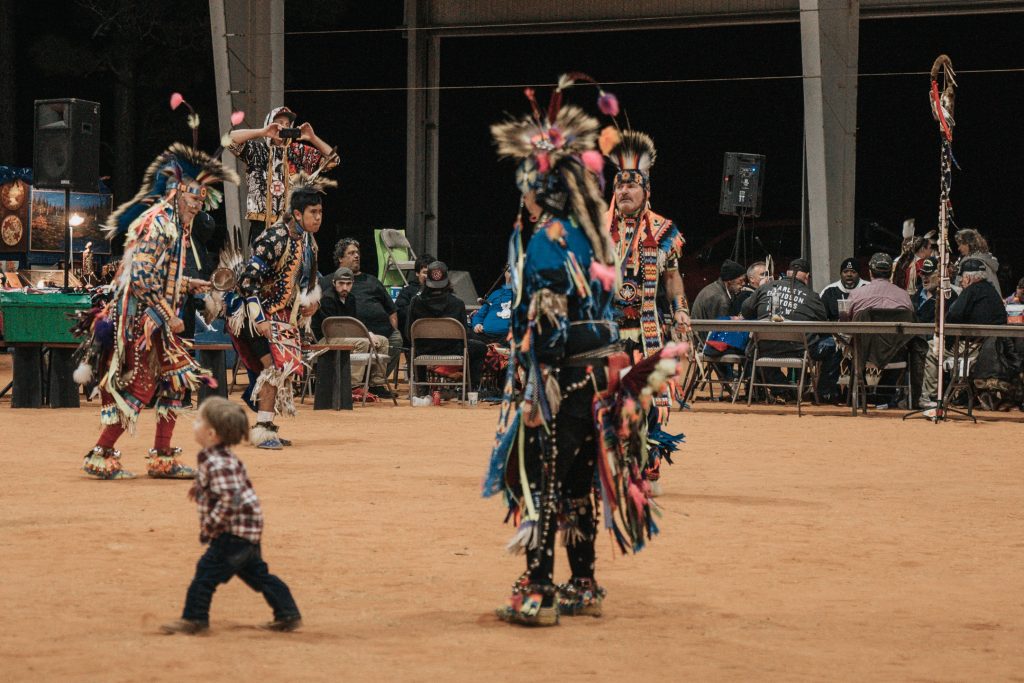
In the Native American community, collective healing and celebration happens in the circle of a Pow-wow. Dancers, drummers and singers gather clad in elaborate regalia hand crafted in a rainbow of beadwork, feathers, and leather details. Best described as a festival, vendors display intricate crafts of bones and fur while the smell of sage and fry-bread envelops the senses. Day-visitors and lifetime pow-wow veterans blend into an ephemeral yet timeless atmosphere for a weekend together.
Fifteen men and women encircle a raw-hide drum three feet in diameter, located in the center of the dance arbor. The sacred pulse of the Pow-wow begins to beat. Their voices create an ethereal and tempestuous chorus of ancient words and capricious, animal-like howls. Soaring, lead voices initiate a song, and are quickly backed by a tsunami of chorus singers. Channeling the stories, traumas, and victories of the cultures’ millennia-long history, drummers and singers radiate their trance-like connectivity across the entire grounds.
Receiving those radio-waves, dancers enact the stories of the hunt, healing, and the harvest. Dappled with sparkling beadwork, glistening furs, and colorful feathers, the dancers connect the sound of the drum to the Spirit of the Earth. Each step a prayer, each step a story, the dancers flow between trance-like determination and breathless exhaustion. The drumbeat and the footstep become one, and for spectators, dancers, drummers and spirits, the Pow-wow circle transforms into an altar connecting Man with the Divine.
Humankind’s Impossible Future
World building is a term often used to describe JK Rowling’s construction of the wizarding universe, Hogwarts, and the rules of magic in the Harry Potter Series. An author is successful in world building if their vision is conveyed with totality, style, and conviction. When communities engage in world building, their success is measured not only by creating a vision, but by materializing that vision. No other community tests the limits of world building like the North Italian community of Damanhur. An ecovillage and a global Federation of Spiritual Communities, the Damanhurian slogan is, “Make the Impossible, Possible.”
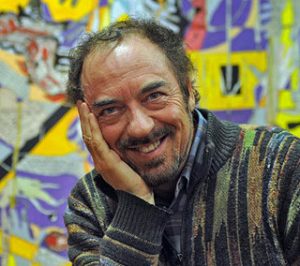
This slogan may sound like a motivational poster in a corporate break room, but Damanhurians are serious about breaking concepts of possibility. In Damanhurian lore, the community’s founders time traveled to the civilization of Atlantis and brought back lost secrets of technology and progress to model the future of humanity. This is not the lore of gnomes and faeries, not science fiction – Damanhurians claim that their leader, Falco Tarassaco, actually time traveled to Atlantis.
Founded in 1975, the main campus of Damanhur is located an hour outside of Turin, Italy in the Piedmont foothills of the Chiusella Valley with the Alps cresting on the horizon. The world-building of Damanhur reflects their Atlantean lore vividly. Fanciful murals, mythical statues, and stained-glass details decorate hundreds of structures in the village. Community houses and artisan buildings instantiate their communal values. The Temples of Humankind, an underground network of hand-excavated rooms, are elaborated with the skill of Renaissance Duomos and Egyptian ruins. Members conduct rituals and pilgrimages with elaborate, well researched techniques of esoteric divination.
Damanhurians breathe life into their unbelievable lore with jaw-dropping craftsmanship, fueled by devotion. And why? Because Atlantis, to the Damanhurians, represents a time of peace. Atlantean technology and institutions are truly for the collective benefit, with richness and wealth that is enjoyed by the masses. Atlantis is hope, a guiding light, a Greco-Deco world of ornate beauty and shared equanimity.
After a week of touring temples and workshops, holy sites and cooperative businesses, I was simultaneously pleased and perturbed. On one hand, the Damanhurians I met were intelligent business people, hard-workers building alternative modalities of communal living. And they are successful by any measure – they live communally in groups of ten or more, with abundant art and beauty, and have hundreds of permanent residents spanning multiple generations. On paper, it’s the highest functioning, largest ecovillage in the world. On the other hand, I couldn’t stop questioning, “Do they actually believe in time travel? What is this obsession with the myth of Atlantis? Did they actually time travel to Atlantis?” I was stuck in the nerve-wracking purgatory of disbelief and wanting to believe.
But the teachings of Falco finally became clear. It wasn’t about time travel, or magic, or needing to believe in Atlantis. This is a culture with one core teaching: exercise your free-will for a pure purpose. I imagine Falco asking, “Do you want to settle for the world as-is, or do you want to live in Atlantis? If you choose Atlantis, help me build it. It will not build itself.” That’s what drives the art, the culture, the world building of Damanhur – belief that individuals can change the world only if they choose to materialize their vision. The more Damanhurians exercise their free will, the more tangible Atlantis becomes, the greater faith is rooted in the possibility of realizing a world as spectacular as Atlantis.
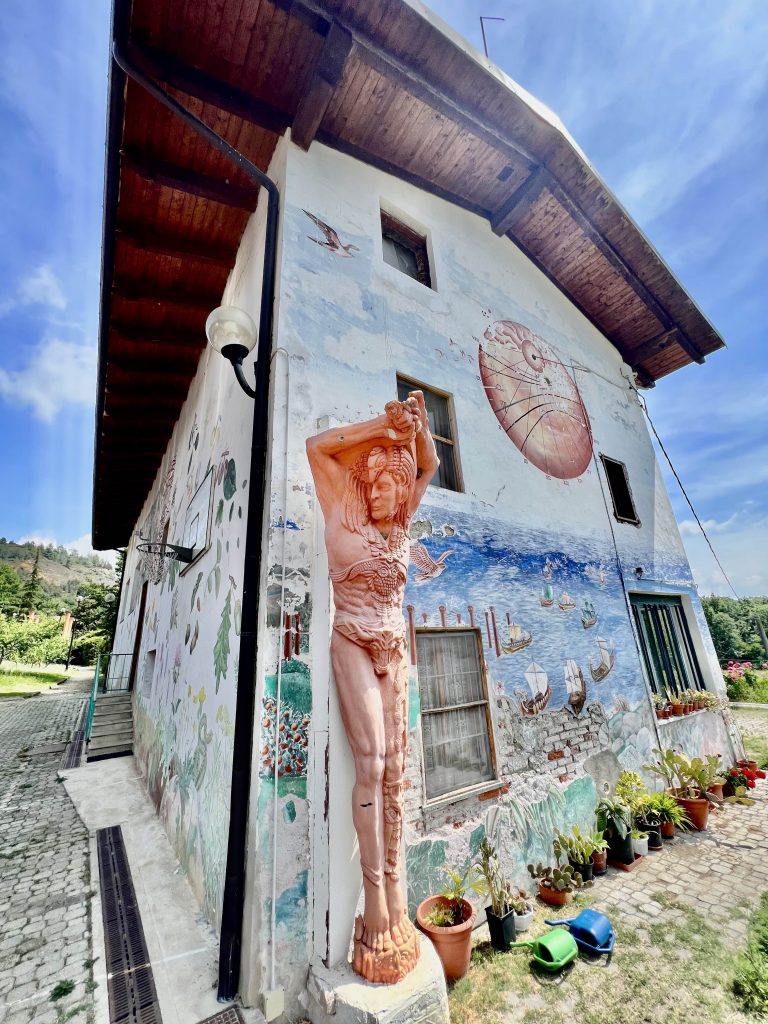
Beginning construction in 1978, twenty-four Damanhurians began working in secret to excavate and decorate the subterranean Temples of Humankind. The project continues to this day. They didn’t tell their families what they were up to. Tens of thousands of square feet of murals, sculptures, stained-glass and mosaics animate the teachings of Falco, and the collective vision of Atlantis. I have visited St. Peter’s Basilica by Michaelangelo, I have seen the Sistine Chapel. I have seen heaven and earth bridged by the hands of man. Faith, and only faith, can motivate volunteers to give their time and talents in service of such an audacious project.
And, a deafening realization washed over me as my visit drew to a close: I didn’t have that kind of faith in my own mission.
My life’s mission of building sustainable cities and restoring balance with the Earth was sitting on a swampy foundation. My imagination had been hampered by the practicalities of market forces and profit maximization and resource constraints and political alignment. Looking back, I’ve never truly allowed myself to fathom a circular economy or a zero-carbon city, because, deep down, I believed these were truly impossible. And I am not alone. My generation of business-oriented change-makers are settling for less. Stuck in the rut of greening the supply of goods and services because it’s ‘impossible’ to change human behavior. Bold visions are in short supply because imagination has been cut off at the knees.
But communities are not settling. Everything is on the table. Communities facilitate the transformation of lifestyle choices, economic dynamics, food systems, and education. Communities experiment with behavior change while nurturing the heart and soul of each member. Communities are alchemical laboratories where human happiness is no longer mutually exclusive with true ecological balance.
Imagining Tomorrow
Falco gave me the gift of time travel. He broke my cage of limiting beliefs by asking me to entertain the seemingly outlandish and impossible. He showed me a glimpse of Atlantis in the world-building of Damanhur. Now I have faith that humankind can build whatever world we desire. A zero waste economy? Possible. World peace? Doable. Shared wealth and abundant beauty across the globe? Let’s make it happen.
Over the last year, I have dreamed up my own version of Atlantis, a patchwork of qualities from the communities I visited across the globe. My Atlantis is a simple and profoundly nourishing place: we’ve reduced our cost of living by half, so we work half the time at our money-driven jobs, about 3 days per week. We spend more time teaching our children and ourselves how to grow food, share assets, and beautify our houses. We prioritize celebration and music and art in the circle of our extended family. We demand less of Mother Earth as a byproduct of joyful, purposeful world building. The theatrical plays, music rehearsals, and soccer matches happen in our shared backyard where tall fences once separated our isolated kingdoms. We wake without the worry of a brutal daily schedule, we support each other in a state of perpetual gratitude for the small blessings of everyday life. We’re close enough to the abundance of blackberries and apple trees that we never feel the need to work a half-pleasing job. We elected our politicians, we shaped our economy, and we scaled back our consumerism to make this happen. We have peace of mind because we have more unprogrammed time, we treat each other with true kindness and love. And with each generation, it only gets better.
This Atlantis is not impossible. With alignment, we can steer this ship in any direction we please. It is our economy, our government, our world. Together, we are stronger than any inertia that appears to block this future. There is enough space, money, and time to make this Atlantis a reality in our generation. The transformation starts within, but materializes with your hands. I imagine Falco asking, “Do you want to live in Atlantis, or not?”
We would be wise to elect our future presidents and finance ministers from communities like Damanhur. They will make a bold vision come to life because they have birthed myths into reality, and, in times like these, they are exactly the world-builders we need.

